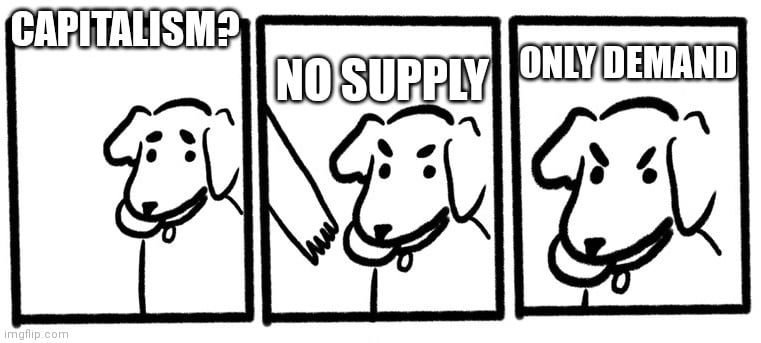If you want to understand America’s strange relationship with housing in the 21st century, look at Austin, where no matter what happens to prices, someone’s always claiming that the sky is falling.
In the 2010s, the capital of Texas grew faster than any other major U.S. metro, pulling in movers from around the country. Initially, downtown and suburban areas struggled to build enough apartments and single-family homes to meet the influx of demand, and housing costs bloomed across the region. Since the beginning of the pandemic, even as rent inflation has gone berserk nationwide, no city has experienced anything like Austin’s growth in housing costs. In 2021, rents rose at the most furious annual rate in the city’s history. In 2022, rent growth exceeded every other large city in the country, as Austin’s median rent nearly doubled.
This might sound like the beginning of a familiar and depressing story—one that Americans have gotten used to over the past few decades, especially if they live in a coastal blue state. California and New York, anchored by “superstar” clusters in Silicon Valley, Hollywood, and Wall Street, have pulled in some of the nation’s most creative workers, who have pushed price levels up. But a combination of stifling construction regulations, eternal permitting processes, legal tools to block new development, and NIMBY neighbors restricted the addition of more housing units. Rent and ownership costs rose in America’s richest cities, until families started giving up and moving out. As the economics writer Noah Smith has argued, California and New York are practically driving people out of the state “by refusing to build enough housing."
But Austin—and Texas more generally—has defied the narrative that skyrocketing housing costs are a problem from hell that people just have to accept. In response to rent increases, the Texas capital experimented with the uncommon strategy of actually building enough homes for people to live in. This year, Austin is expected to add more apartment units as a share of its existing inventory than any other city in the country. Again as a share of existing inventory, Austin is adding homes more than twice as fast as the national average and nearly nine times faster than San Francisco, Los Angeles, and San Diego. (You read that right: nine times faster.)
The results are spectacular for renters and buyers. The surge in housing supply, alongside declining inbound domestic migration, has led to falling rents and home prices across the city. Austin rents have come down 7 percent in the past year.
One could celebrate this report as a win for movers. Or, if you’re The Wall Street Journal, you could treat the news as a seriously frightening development.
Rent doubles in 2022, then eventually drops by 7% by 2024.
Doesn’t sound like lower-middle classes are winning to me.
Don’t get me wrong, it’s trending in the correct direction (finally). But people need to push hard until either the average/median workers wages raise, or rents fall until all the costs of shelter are 30% or less of salary.
Ideally there is a strong public housing presence that heavily depresses the profitability of being a landlord.
Rent doubles: Get used to it, renters.
Rent drops 7%: Oh, the humanity!!!
Millennial here. When I was a kid, before everything lost its goddamn mind in 2004-6, landlord was generally something old, retired folks did for a little extra money, not a career choice or get rich quick scam.
First thing I do when I get home is I’m gonna punch whoever gave everyone the idea that housing should be an investment that never goes down (instead of, you know, something you use to survive) in the back of the neck.
The headline completely buries the lede by making it sound like this is an article specifically about Austin, rather than the entire housing market.
In the U.S., our houses are meant to perform contrary roles in society: shelter for today and investment vehicle for tomorrow. This approach creates a kind of temporal disjunction around the housing market, where what appears sensible for one generation (Please, no more construction near me, it’s annoying and could hurt my property values!) is calamitous for the next (Wait, there’s nowhere near me for my children to live!).
If homeownership is best understood as an investment, like equities, we should root for prices to go up. If housing is an essential good, like food and clothing, we should cheer when prices stay flat—or even when they fall. Instead, many Americans seem to think of a home as existing in a quantum superposition between a present-day necessity and a future asset.
Thank you, article, for finally spelling out the obvious paradox that is housing in North America. I don’t understand why this isn’t immediately obvious to everyone, but then again we live under the myth that perpetual growth is not only possible, it’s vital to a healthy society.
I recently moved out of Austin after 25 years there (health reasons and slowly retiring). No matter what headlines you read, I think Austin is a great town to be in as a young professional. If your priorities in life are good drinking, eating, fucking, and working, then Austin is a good choice.
Now, if only the GOP Texas Legislature would fuck off and Ken Paxton go to prison, Austin would be ideal.
The problem I’ve always had with Austin is I like drinking (water) and fucking (other women) and while Austin seems very on board with that the state of Texas sounds dead set against it
Though I suppose I live in a glass house on the latter issue as an Ohioan.
Come over to Portland! I moved here a few years back. I recall sitting in traffic when a tatted up guy in a pink crop top, the shortest cutoff jeans I’ve ever seen, and a bright pink skateboard rolled past us and no one batted an eye. In that moment, I knew I was home.
I would love Portland, but damn do I suck at finding work outside of my area
Is Death Metal Pizza still there?
They are but they had to leave their long time original location on 6th to the south side of town.
Glad to hear it. Nothing better after a night of drinking than a big, greasy, floppy slice handed to you from what sounds like the pits of hell.
Lots of places on planet earth fit that bill and aren’t in fucking Texas. RIP Kyu Cho =[
Are the “some people” landlords?
The results are spectacular for renters and buyers…One could celebrate this report as a win for movers. Or, if you’re The Wall Street Journal, you could treat the news as a seriously frightening development
Because the wall street journal’s readers aren’t renters, they’re investors, and while lower rents are good for renters they’re not good for investors.
The relationship between investors and consumers is often adversarial, they have opposing interests. The investors want to make as much money as possible and the consumers want to spend as little as possible on the things they want and need. Usually that’s not a huge problem because (ideally) consumers have choices, like the choice to not buy something they want if they think the price is too high, but when it comes to things like housing, consumers’ choices are limited to: pay whatever investors demand or be homeless. That’s less a choice than a threat.
Surprising no one, basic economics holds for the housing market.

As the article notes this actually does surprise a large number of people. Researchers did a study with thousands of Americans where they found that people generally understood supply and demand for goods like cars or produce.
Then the economists asked the participants about housing. They said: If a new law makes it easier to build dwellings near train stops, what happens to housing prices? Well, all of a sudden, the laws of supply and demand no longer applied. More than a third of participants said that “a large, exogenous increase in their region’s housing stock” would cause rents and home prices to rise.
I can’t help but wonder, did they really use the word ‘exogenous’ in a poll of average Americans?
Well, the relationship between the supply and the price of housing is complicated. I live in NYC, in a building which has over 700 units in it. The building takes up as much land as a single-family home does in a rural area. But of course living in this building is much more expensive than living in that single-family home, despite the fact that the building represents a much larger supply of housing.
I know your example says “exogenous” and I agree that technically increasing supply doesn’t directly lead to increasing prices, but in practice if I see a lot of new housing being built in an area, I would expect that housing prices in that area are going up. (Why build housing somewhere where it won’t be a good investment?)
Well yeah because of the demand. If nyc home prices fell to Columbus Ohio home prices I wouldn’t even bother finding a job to move there.
They had to pick “near a train stop”? Yes, I’d expect prices to rise. I don’t know about rest of the US but here demand for that would increase faster than supply, plus the new buildings would be high end with all the amenities.
This actually has been happening in my town. All the new big apartment/condo blocks around the train station are high end: one advertised by the number of professional baseball players who moved in. It’s great that we’re getting higher density housing in the town center and the train, but it’s also a gentrification. Prices go up. Restaurants get higher end, etc
This is one of the corners we’ve painted ourselves into. Housing is too expensive, but it’s also the nest-eggs for a lot of people. So we either keep the price of housing high and people can’t afford it, or we lower the price of housing and a lot of ordinary folks who did what they were told was good will lose out.
Those are the same people who told my generation that we would all be failures if we didn’t pay tens to hundreds of thousands of dollars to get a college degree, so my sympathies are limited.
Late life shouldn’t need a nest egg. But, you know, gotta make sure doctors are rich.
Haha, doctors? Nah, we’re way past that stage fam
Private practice was largely choked out - most doctors work for healthcare systems now. They make reasonable money, but they’re pushed to their limits to be just comfortably middle class these days. Remaining private practice doctors get paid a bit better if they have a lot of work, but it’s not what it used to be
Healthcare systems, pharma, medical device producers, and insurance. That’s where all the money goes
I think you got downvoted because in reality it’s not so black in white. An increase in home production doesn’t mean build so many home the value of a home drops next week. The idea is to be building homes to where the value of homes starts to plateau compared to income.
If you bought a home before, you were able to purchase a home sooner when they were expensive and were able to utilize all the advantages that come with home ownership sooner. Over time you would see the market changing and make investment decisions based on those indicators. You would have still built equity in your home.
Of course the change wouldn’t be immediate, and wouldn’t completely devalue homes across the country. However, people who were planning on their house going up 50% in value but only see it go up 30% in value won’t feel too good about that.
This isn’t so much about the fairness of the policy, but the politics. Existing homeowners have a lot of power at the local level, and are usually politically involved. If these people feel short-changed they won’t have happy feelings for the party that got it passed. But I guess that’s why they’re called “reactionaries.”
I think it’s a bit disingenuous to compare Austin building rates to SF and NYC. Austin is far less built up then those other two cities so there’s still a lot of easy gains to be made. Turning two single family homes into a 3 story 10 unit apartment complex is relatively cheap, has a high profit potential and multiplies the housing stock by 5. The problem comes when you run out of cheap single family houses on large lots and have to start turning the town houses and three story apartments into high rises. That is significantly more capital intensive, requires way more permitting and inspections, as it should, and has less potential for gains in housing and profit.
This isn’t to fully excuse those cities as they could definitely be building more housing. Just saying their success isn’t only due to them getting the government out of the way and letting developers build. Building 9x more housing is easier when your 9x less dense already. San Diego has no excuse though.
There are more vacant homes than there are homeless. By an extremely wide margin in most cities. Apparently it’s magical to believe the problem isn’t a lack of homes, but completely reasonable to believe we just need to build more.
I found this interesting bit related to affordability:
https://youtube.com/shorts/oB_hZUmzSPU?si=GE_fK5UR1dXej5xF
Don’t know if it’s true.









